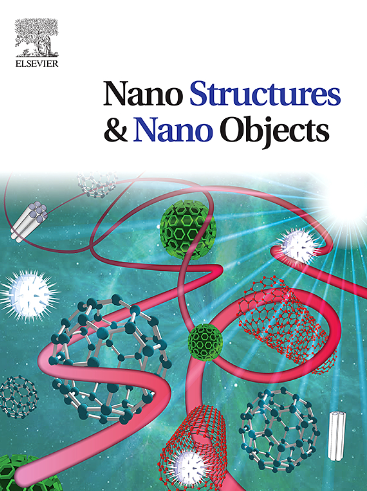光催化活性增强的Ag/RGO/TiO2三元纳米复合材料
IF 5.45
Q1 Physics and Astronomy
引用次数: 0
摘要
水体中的有机污染物对人类健康和生态系统构成严重威胁。这些污染物中有许多是持久性的,不可生物降解的。淡水中有害物质的掺假迫使研究人员开发先进、高效、经济的水修复技术和材料。利用微波辐照合成了一种可见光响应等离子体Ag/RGO/TiO2光催化材料。与TiO2和RGO/TiO2相比,设计的光催化材料在可见光下的光活性增强。Ag的掺杂有效地移动了价带边电位,提高了三元杂化物的氧化能力。在不同Ag含量比中,Ag含量为0.02 g的AGT III在可见光下对罗丹明(rhodamine, RhB)的光催化降解活性最高。这种改进的光催化活性是由于显着缩小了带隙和增强了电子导电性。利用各种清除剂对参与光催化降解的活性物质进行了研究。本研究结果对制备有效的光催化剂具有重要意义,可用于多种用途。本文章由计算机程序翻译,如有差异,请以英文原文为准。
Visible light-responsive plasmonic Ag/RGO/TiO2 ternary nanocomposites with enhanced photocatalytic activity
Organic pollutants in water now poses serious risks to both human health and ecological systems. Many of these pollutants are insistent and non-biodegradable. The adulteration of fresh water by detrimental substances has compelled researchers to develop advanced, efficient, and cost-effective water remediation techniques and materials. A visible light-responsive plasmonic Ag/RGO/TiO2 photocatalytic material has been synthesized via facile microwave irradiation. The design of the photocatalytic material shows enhanced photoactivity under visible light compared to TiO2 and RGO/TiO2. The Ag doping had effectively shifted the valence band edge potential increasing the oxidation power of the ternary hybrid. Among different ratios of Ag content, AGT III with 0.02 g Ag exhibits the highest photocatalytic activity toward photocatalytic degradation of rhodamine (RhB) under visible light. This improved photocatalytic activity is due to the significantly narrowed bandgap and enhanced electronic conductivity. The active species involved in photocatalytic degradation have been studied using various scavengers. The results from this investigation have a telling effect on the facile fabrication of an effective photocatalyst, which can be used for many applied applications.
求助全文
通过发布文献求助,成功后即可免费获取论文全文。
去求助
来源期刊

Nano-Structures & Nano-Objects
Physics and Astronomy-Condensed Matter Physics
CiteScore
9.20
自引率
0.00%
发文量
60
审稿时长
22 days
期刊介绍:
Nano-Structures & Nano-Objects is a new journal devoted to all aspects of the synthesis and the properties of this new flourishing domain. The journal is devoted to novel architectures at the nano-level with an emphasis on new synthesis and characterization methods. The journal is focused on the objects rather than on their applications. However, the research for new applications of original nano-structures & nano-objects in various fields such as nano-electronics, energy conversion, catalysis, drug delivery and nano-medicine is also welcome. The scope of Nano-Structures & Nano-Objects involves: -Metal and alloy nanoparticles with complex nanostructures such as shape control, core-shell and dumbells -Oxide nanoparticles and nanostructures, with complex oxide/metal, oxide/surface and oxide /organic interfaces -Inorganic semi-conducting nanoparticles (quantum dots) with an emphasis on new phases, structures, shapes and complexity -Nanostructures involving molecular inorganic species such as nanoparticles of coordination compounds, molecular magnets, spin transition nanoparticles etc. or organic nano-objects, in particular for molecular electronics -Nanostructured materials such as nano-MOFs and nano-zeolites -Hetero-junctions between molecules and nano-objects, between different nano-objects & nanostructures or between nano-objects & nanostructures and surfaces -Methods of characterization specific of the nano size or adapted for the nano size such as X-ray and neutron scattering, light scattering, NMR, Raman, Plasmonics, near field microscopies, various TEM and SEM techniques, magnetic studies, etc .
 求助内容:
求助内容: 应助结果提醒方式:
应助结果提醒方式:


